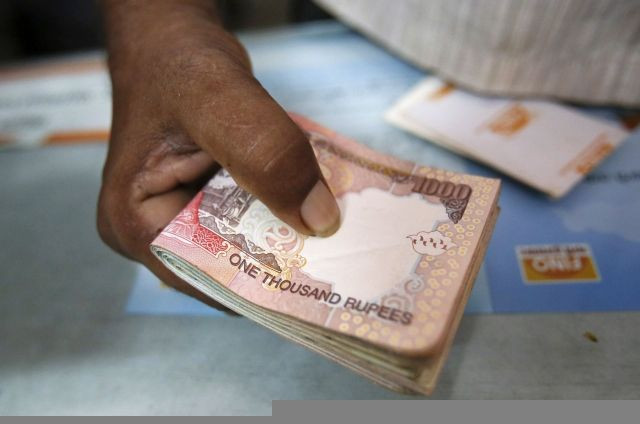Why India's Currency, The Rupee, Has Plummeted To A Record Low Against The Dollar

If India’s currency were a baseball team it would be a cross between the basement-dwelling Houston Astros and the soon-to-be basement-dwelling New York Mets.
Since January the rupee has plunged 20 percent, and in the last three months it’s dropped 13.1 percent, the biggest such decline in nearly 18 years. On Wednesday India’s currency posted its biggest one-day drop ever and now sits at a record low against the dollar.
Inflation is running around 10 percent, the worst of any large economy, and the government now has to pay buyers of its 10-year notes a whopping 8.96 percent interest.
So what gives? How does the currency of the world’s second-largest country implode like that?
One of the factors hammering the rupee is the fact that India spends more than it makes, something it can do because international lenders are willing to loan to the nation. Indeed, India’s current account deficit, as it is called, is at an all-time high.
“Economies running a current account deficit have savings that are insufficient to finance their investment and growth, and therefore need to borrow from the rest of the world,” said Paul F. Gruenwald, Asia-Pacific chief economist for Standard & Pacific, in a note released Wednesday.
“In times of normal risk appetite, this dependency may not be a problem. However, when markets become risk averse, economies with current account deficits often find themselves facing external financing pressure. These include weaker currencies, shorter tenures for debt and higher borrowing costs.”
Gruenwald also said that a key characteristic of India’s economy tends to make its lenders particularly risk averse. Some economies that run current account deficits depend on foreign trade to grow; others, like India, run current account deficits and depend primarily on domestic demand to grow. Economists term such economies “low beta” economies.
“If growth is largely domestically propelled and domestic fundamentals remain reasonably strong, then low-beta economies will continue to do well even if global growth suffers," Gruenwald wrote. "This translates into a worsening current account because imports will remain robust, reflecting strong domestic demand, while exports will suffer. So an external growth shock will lead to rising external financing risks in low-beta economies. These rising external financing risks can have negative repercussions on domestic growth through tighter financing constraints and lower confidence, which is what we witnessed recently in India and Indonesia.”
ITG economist Steven Blitz casts more light on the reasons for the rupee's collapse by identifying two other factors. One is the Federal Reserve's signals that its unprecedented bond buying -- $85 billion each month -- is about to be reduced, and the fact that the value of the rupee is determined by the market because it is not pegged to another currency.
“The rupee is falling because the (Indian) economy’s high current account deficit is colliding with the Federal Reserve’s signal to reduce monetary stimulus, which has already raised U.S. interest rates,” Blitz said. “Free-floating currencies of trade-deficit nations, such as the rupee, often decline to adjust for the higher interest rate that can be earned on competitive holdings, such as U.S. dollar assets.”
Once the currency begins losing value the dynamic becomes self-reinforcing.
“It now becomes more expensive for India to service its foreign debt,” said Blitz. “This is Econ 101 in action: The weaker currency drives the nation back towards a balanced trade account, but the cost is weaker domestic growth. Weaker growth, in turn, only worsens India’s domestic government deficit.”
Banks are beginning to recognize India's diminished growth prospects. BNP Paribas chopped its growth forecast for the 12 months ending March 2014, to 3.7 percent, from its previous 5.2 percent, which is the weakest growth rate since 1991-92, Reuters said. That’s a huge come-down from a nearly 10 percent per-year growth rate as recently as four years ago.
Political factors also are aggravating India’s current account deficit. On Aug. 14 the government announced capital controls to keep residents from taking money from the country. That simply triggered more intense efforts by Indians to take their money out of the country or convert it into gold, which requires buying it from foreign sources. Both moves worsen the current account deficit, which also is exacerbated by the high crude oil prices; India imports about 80 percent of its petroleum needs.
The difficulty of borrowing from international lenders is further exacerbated by what international lenders see as India’s structural inadequacies: roads and suitable buildings not getting built and the country's legal system not being modernized, among other factors.
“With investor momentum reversed, investors look at India today with a more critical eye to see how it is or really isn’t governed, the infrastructure not built, and wonder whether this nation can translate its global competitive advantages in 21st-century industries into building a 21st-century nation,” ITG’s Blitz said.
© Copyright IBTimes 2024. All rights reserved.






















